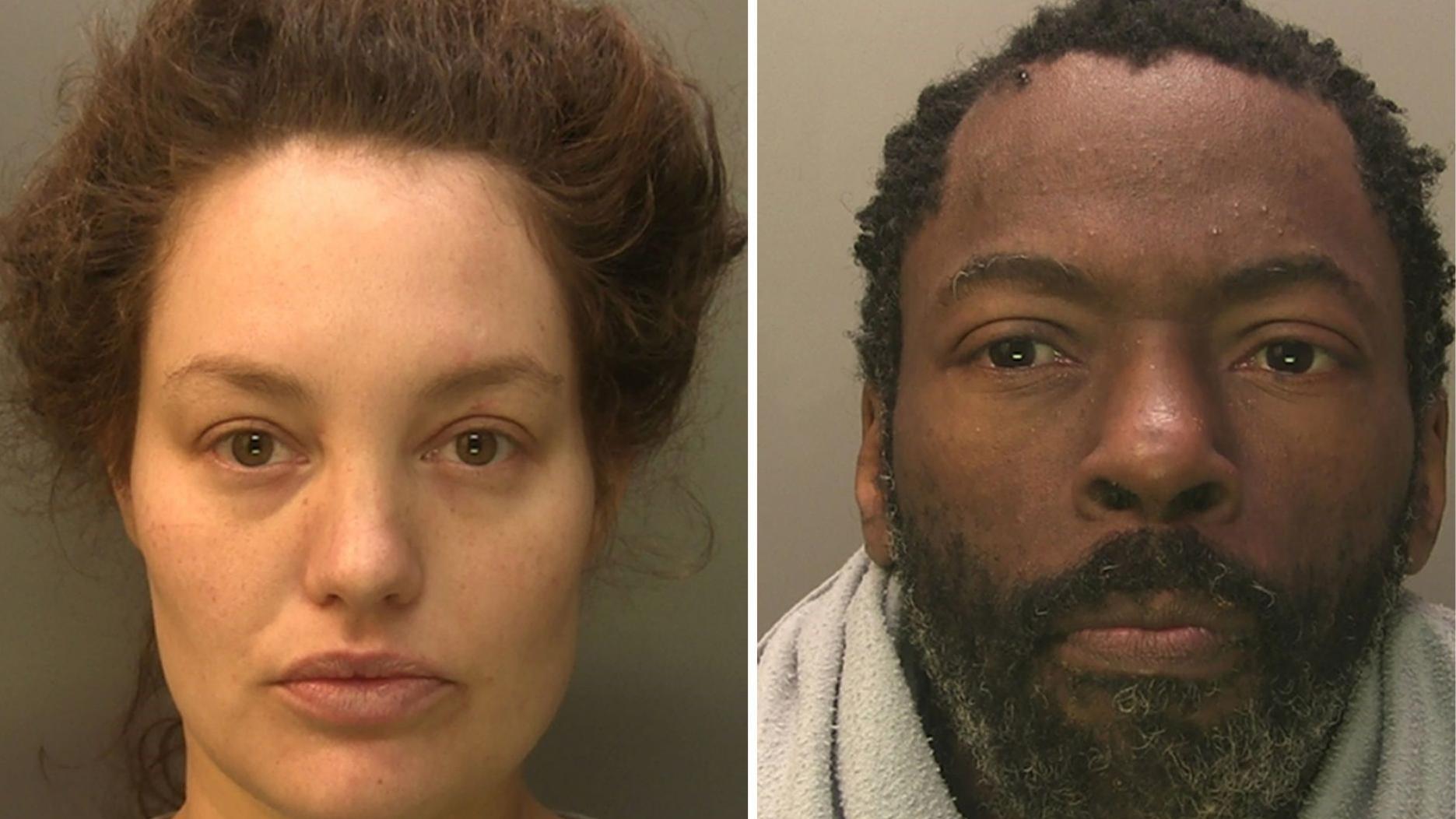The tragic story of a couple convicted for killing their baby daughter has shaken communities, ignited public debates about child protection laws, and raised difficult questions about parental responsibility, mental health, and the justice system. Cases like this are not just isolated incidents of violence within the home; they serve as a mirror reflecting wider issues in society—ranging from the effectiveness of social services to the failure of preventive systems that could save vulnerable children. This heartbreaking narrative reminds us of the delicate balance between trust, family, and oversight, and it forces us to confront uncomfortable realities about how societies care for their youngest and most defenseless members.
- The Background of the Case
- The Events Leading to the Baby’s Death
- The Court Trial and Conviction
- Public Reaction and Media Coverage
- Child Abuse Statistics and the Bigger Picture
- The Role of Social Services and Systemic Failures
- Psychological Dimensions of the Case
- The Legal and Ethical Debate
- Lessons Learned from the Tragedy
- Expert Opinions on Preventing Child Abuse
- Moving Forward: Hope Amid the Tragedy
- FAQs
- What happened in the tragic story of a couple convicted for killing their baby daughter?
- Why did the court convict the parents?
- Could social services have prevented this tragedy?
- What does this case reveal about child abuse globally?
- How can child abuse be prevented in the future?
- Conclusion
The Background of the Case
Every tragic story has a beginning, and in this case, it began with a young couple who appeared from the outside to be building a life together as new parents. Friends and neighbors recalled that they initially seemed overjoyed at the birth of their baby daughter. But beneath the surface, cracks in their relationship, financial instability, and personal struggles began to emerge. Investigations later revealed a troubling household environment, where neglect and abuse went unnoticed until it was too late.
The baby’s short life was marked by instability. According to reports, concerns had been raised by relatives and healthcare professionals, but intervention either came too late or was too minimal to prevent tragedy. This background underscores the importance of early detection in cases of child abuse and the urgent need for coordinated responses from welfare organizations, hospitals, and law enforcement.
The Events Leading to the Baby’s Death
The prosecution revealed harrowing details about the circumstances leading up to the infant’s death. The baby suffered repeated neglect, malnutrition, and physical abuse, leaving her frail and vulnerable. Medical experts testified that she had injuries consistent with long-term mistreatment, suggesting a pattern rather than a single tragic mistake.
In court, jurors heard how the couple failed to provide basic care such as regular feeding, medical attention, and a safe environment. The defense attempted to paint a different picture, highlighting the couple’s alleged struggles with mental health, poverty, and social isolation. Yet the evidence proved overwhelming: the baby had been systematically failed by those who were supposed to protect her.
The Court Trial and Conviction
The trial was not just about determining guilt; it was about exposing the devastating reality of what had happened behind closed doors. Prosecutors presented medical reports, neighbor testimonies, and digital evidence including messages that pointed to the couple’s reckless behavior. Witnesses described hearing cries that went unanswered, while others spoke of the parents’ erratic lifestyle.
Ultimately, the jury convicted the couple of manslaughter and child cruelty. The sentencing was severe, reflecting the gravity of the crime and the irreversible loss of a child’s life. The judge condemned the actions of the parents, emphasizing that their duty as caregivers had been replaced by neglect and cruelty. For many observers, the conviction was both a moment of justice and a painful reminder of systemic failure.
Public Reaction and Media Coverage
The tragic story of a couple convicted for killing their baby daughter quickly became headline news, sparking outrage, sadness, and reflection across the nation. Newspapers and television reports carried heartbreaking images of the child and detailed accounts of the trial, ensuring that the public remained engaged with the case.
Public sentiment was fierce. Many people expressed anger not just at the parents but also at the institutions that had missed opportunities to intervene. Social media discussions reflected a mix of grief and calls for reform. Advocacy groups used the case as a platform to demand stronger child protection measures and increased funding for social workers, while others called for harsher penalties for those convicted of crimes against children.
Child Abuse Statistics and the Bigger Picture
To understand the gravity of this tragedy, it is important to place it within the broader context of child abuse. According to the World Health Organization (WHO), nearly 1 billion children between the ages of 2 and 17 have experienced physical, sexual, or emotional violence or neglect in the past year. In many countries, child abuse fatalities remain alarmingly high, with thousands of children dying annually due to maltreatment.
In the United States alone, government statistics show that over 1,700 children died from abuse and neglect in a single year. Experts believe the true number is even higher, as many cases go unreported or are misclassified. These figures underline the tragic reality that child abuse is not a rare phenomenon but a persistent crisis requiring urgent attention.
The Role of Social Services and Systemic Failures
One of the most pressing questions in the wake of this case is whether the baby’s death could have been prevented. Records show that multiple warnings were raised about the couple’s ability to care for their child, yet intervention was limited. Social workers are often overwhelmed with caseloads, underfunded, and under pressure, which can lead to tragic oversights.
Experts argue that while social services play a crucial role in protecting children, they cannot operate effectively without proper resources. Understaffing, poor training, and bureaucratic hurdles mean that vulnerable children often slip through the cracks. This case exemplifies how systemic weaknesses in child protection can have fatal consequences.
Psychological Dimensions of the Case
Understanding why parents harm their own children requires an exploration of psychological and social factors. Studies have shown that parents who commit acts of abuse often struggle with unresolved trauma, substance abuse, financial stress, or mental health conditions. In this case, the defense claimed that the couple’s deteriorating mental state contributed to their neglectful and violent behavior.
While such factors may help explain behavior, they cannot excuse it. Mental health professionals emphasize that support systems must be strengthened to address parental stress and prevent abuse before it escalates. Programs that provide counseling, community support, and education for struggling parents can play a vital role in reducing the risk of child neglect.
The Legal and Ethical Debate
Cases like this one raise difficult legal and ethical questions. Should parents who kill their children receive life sentences, or should the courts consider mitigating factors such as poverty and mental illness? Some legal experts argue that strict punishments act as a deterrent, while others caution against ignoring the broader social circumstances that lead to such tragedies.
Ethically, society faces the challenge of balancing compassion for struggling parents with an uncompromising defense of children’s rights. The tragic story of a couple convicted for killing their baby daughter demonstrates that while personal responsibility is paramount, systemic reforms are equally necessary to prevent similar incidents.
Lessons Learned from the Tragedy
This case highlights several crucial lessons for policymakers, communities, and families. First, early intervention saves lives. Doctors, teachers, and neighbors must feel empowered and supported to report suspicions of child abuse. Second, governments must allocate adequate funding to social services so professionals can respond effectively. Third, public awareness campaigns are essential to educate parents about the consequences of neglect and to promote positive parenting strategies.
Ultimately, the story is not just about one baby’s tragic death but about the broader need to safeguard all children. Each life lost to abuse represents a failure of society as a whole, not just the immediate perpetrators.
Expert Opinions on Preventing Child Abuse
Child protection experts insist that multi-layered strategies are required to prevent abuse. Dr. Karen Smith, a child welfare researcher, explains: “We cannot rely solely on punishment after the fact. Prevention programs, education, and strong community networks are the best defense against tragedies like this.”
Other experts stress the role of healthcare professionals. Pediatricians, for example, are often in the best position to spot early warning signs of neglect or abuse. Training them to recognize red flags and establishing clear reporting pathways can make the difference between life and death.
Moving Forward: Hope Amid the Tragedy
While the baby’s death is a devastating loss, the story may lead to meaningful change if lessons are implemented. Lawmakers are already debating reforms to strengthen child welfare laws, increase funding for social services, and improve coordination between agencies. Nonprofit organizations continue to push for better parental support programs, believing that prevention is far more effective than punishment alone.
Communities, too, are playing a role. In the wake of this case, local initiatives have emerged to raise awareness of child abuse and to support at-risk families. The hope is that the memory of one baby girl’s life, cut short too soon, will inspire action to save countless others.
FAQs
What happened in the tragic story of a couple convicted for killing their baby daughter?
A couple was convicted after evidence showed they had neglected and abused their baby daughter, leading to her death. The trial revealed consistent mistreatment, malnutrition, and lack of medical care.
Why did the court convict the parents?
The court convicted the parents because overwhelming evidence demonstrated prolonged neglect and abuse. The jury found that the parents had failed in their duty of care and were directly responsible for the baby’s death.
Could social services have prevented this tragedy?
Many experts believe that earlier intervention could have prevented the tragedy. Despite warning signs, social services lacked the resources or coordination to act effectively, highlighting systemic weaknesses.
What does this case reveal about child abuse globally?
This case is part of a larger global crisis. According to the WHO, nearly 1 billion children experience some form of abuse or neglect annually. Fatal cases remain tragically common, underscoring the need for reform and stronger protections.
How can child abuse be prevented in the future?
Experts suggest a combination of prevention strategies, including stronger social services, parental education programs, community support, and mandatory training for professionals to identify early warning signs.
Conclusion
The tragic story of a couple convicted for killing their baby daughter is more than a disturbing headline—it is a profound reminder of society’s collective responsibility to protect its most vulnerable members. While justice has been served through the conviction, the deeper work lies in preventing future tragedies through systemic reform, public awareness, and early intervention. Every child deserves love, safety, and care. Ensuring that no other child suffers the same fate is not just a legal duty but a moral obligation shared by all.







